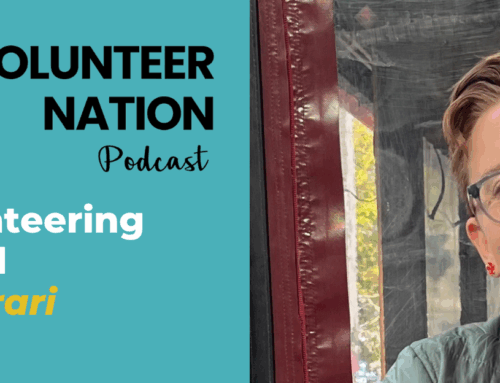 Is Research on Volunteerism Disappearing?
Is Research on Volunteerism Disappearing?
Is volunteerism of interest to academics? Is current and relevant research on volunteerism available? The short answer is, yes. The long answer is a little more complicated.
Because I often hear complaints about the lack of research in our field, I thought the issue might bear deeper examination. Here’s a brief rundown on where we find ourselves when it comes to research-based evidence for volunteer managers.
Research on the Nonprofit Sector in General
If you’re looking for in-depth information about the size and scope of the nonprofit sector in the US, you’ll quickly realize it’s limited. In a recent report, the National Center for Science and Engineering Statistics (NCSES) notes that our sector is still not well understood.
Detailed information about our workforce is even more limited, despite that fact that we have the largest in the US — approximately 2 million nonprofits account for 13.5 million paid workers and 4.5 million volunteers (full-time equivalents). In addition, comprehensive data on research and development activities within our sector have not been collected in nearly two decades, over which there has been dynamic and rapid growth.
In terms of individual positions and salary surveys related to volunteer administration, the NonProfit Times published a salary and benefits report for a wide range of nonprofit jobs, including three job titles related to volunteerism. In some states, local volunteer associations, such as the Greater Richmond Area Volunteer Association have taken on the task of gathering and reporting data for their members.
Research on Volunteerism
It’s been over a decade since Mark Hagar and Jeff Brudney’s Volunteer Management Practices and the Retention of Volunteers, part of a series of volunteer management capacity reports published by the Urban Institute in 2004.
Despite its age, the study is comprehensive, and its evidence still favored by many. However, newer research just doesn’t seem to be disseminated as widely, and complaints by practitioners about the lack, and relevance, of research on volunteerism are commonly voiced.
Surprising, then, is the fact that the academic world appears to be experiencing a research boom, specifically in the area of voluntary action.
David Horton Smith, an early pioneer of research on volunteerism has documented its rise in our sector. In the Growth of Research and Journals in the Emerging Discipline of Altruistics (Nonprofit and Voluntary Sector Quarterly, August 2103), he chronicles the exponential growth of the interdisciplinary field he calls “altruistics” (or ”voluntaristics”), which he uses to describe an encyclopedic range of topics related to altruism in the nonprofit and voluntary sector.
The discipline was first established in an organized way in 1971, with the formation of the Association of Research on Nonprofit Organizations and Voluntary Action by Horton Smith. Since then, he documents the exponential growth of academic altruistic associations and researchers.
There are now over 45 active associations, including the International Society for Third Sector Research, and over 95 active research journals publishing research on altruistics and its subtopics. In addition, he estimates that there are between 8,000 and 20,000 researchers contributing to the body of knowledge globally.
A Maturing Field
There’s also evidence that research in volunteerism is not only growing, it is maturing, albeit by fits and starts.
In Volunteerism Research: A Review Essay, John Wilson offers a broad overview of journal articles covering the results of volunteer surveys. He specifically focuses on findings that reveal volunteer motivations and experiences.
In the review, he notes a body of work that is “becoming more theoretically sophisticated and methodologically rigorous” and yet still contains gaps. The article’s list of references is impressive, with nearly 200 citations of research papers.
At the same time, meta-analyses like this, that seek to combine results from a variety of studies in order to identify similarities and trends, are still limited.
Why the Gap Between Research & Practice?
It’s clear that there’s a communication gap between what researchers are learning and what volunteer program administrators are doing. From a practitioner’s standpoint, there are a number of barriers.
Challenges
- Nonprofits don’t have easy (AKA free) access to academic journals for their own searches.
- Nonprofits don’t have the time or expertise to decode the language and data analyses found in academic research papers.
- Research topics are often irrelevant to the tactical decisions volunteer administrators must make on a daily basis.
- Researchers don’t have immediate connections to nonprofits with whom they might collaborate.
- Data sets are sometimes too small to be significant.
- Research papers that pull together a number of studies along a similar line of inquiry (meta-analyses), in order to arrive at broader conclusions, are limited.
- Not enough similar research is conducted to establish and reinforce a finding that might be applied more broadly.
Closing the Gap: Join the Conversation
The good news is that there is growing awareness of the chasm between research and practice. Academics and pracitioners are working together to find solutions.
The Association for Research on Nonprofit Organizations and Voluntary Action Pracademics Section will be presenting two interactive sessions on bridging the gap at the 2015 ARNOVA Conference.
In a session I am helping coordinate, we will feature a panel of researchers and nonprofits who have successfully implemented collaborative research projects. If you are in the area, it may be worth a visit. The conference takes place in Chicago November 19-21. For more info and to register, go here.
If you can’t make the conference, but are interested in joining the conversation, consider becoming a Pracademic Section member.
The Final Word…for Now
So, is actionable research on volunteerism available? When looking at the gap between research and practice, perhaps we’re asking the wrong question.
The challenge isn’t that research is disappearing; the real issue is that it isn’t getting into the hands of the people who need it most.







Leave A Comment